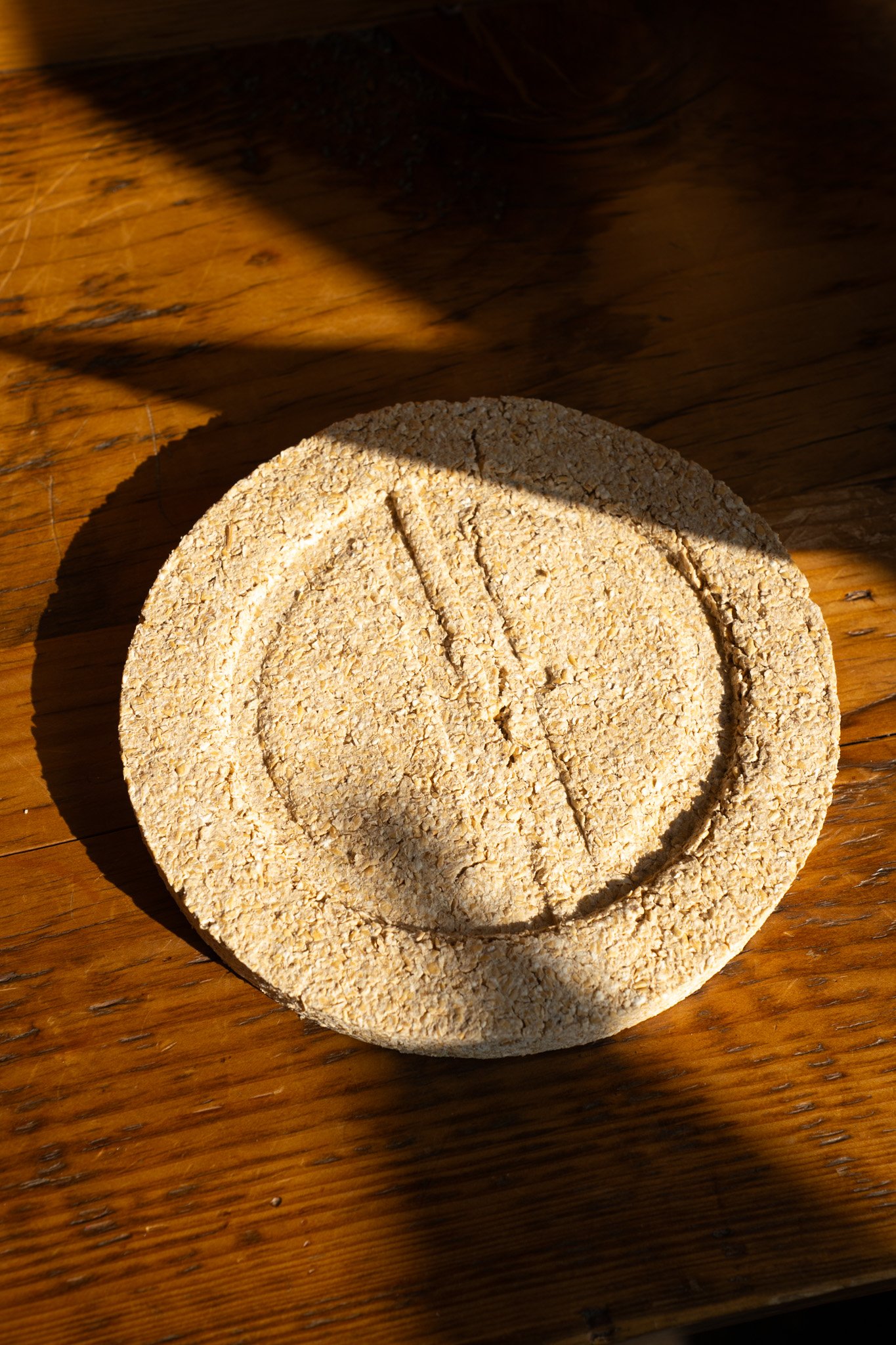All About Nuruk
And how this Korean fermentation starter is powering the future of sool
Among the three ingredients used to make makgeolli — rice, water, and nuruk — the latter can be somewhat perplexing to a first-time sool drinker. But this fermentation starter is also arguably one of sool’s most important ingredients. It gives Korean alcohol its distinctively complex and delightful flavor. (A well-seasoned sool drinker will be able to “taste the nuruk.”)
Depending on the chosen nuruk, the resulting sool can taste like anything from tart pineapple and unripe fruit to woodsy botanicals and hickory oak. So what exactly is nuruk and why is it so unique to sool?
What is nuruk?
At Hana Makgeolli, our nuruk uses a combination of wheat and barley.
Nuruk (누룩) is a traditional fermentation starter that’s meant to saccharify the rice. In other words, nuruk contains enzymes that help break down the starches in rice and transform them into fermentable sugars. These sugars are eventually consumed by the yeasts, also present in the nuruk, to create alcohol.
Other variations of nuruk use rice (like the one above) or millet and mungbean.
Hold a sample of nuruk in your hand, and notice that these pebble-sized starters are light brown and slightly crumbly. Most nuruk is made from a few common substrates such as wheat, rice, barley or a combination, which is eventually inoculated by microorganisms. Wheat is the most popular base ingredient, but nuruk makers have also historically used buckwheat, rice, brown rice, millet, mungbean, sorghum, and more to form this fermentation starter. If you buy nuruk from H Mart or other online sources, you’ll occasionally find nuruk labeled as enzyme nuruk or powdered enzyme amylase.
As with anything fermented, not all nuruk using the same ingredients will yield the same results. The shape and variation of nuruk depends on the region it comes from and every nuruk maker will have their own recipe. Sunshine, humidity, ingredients and time spent fermenting will all affect nuruk’s incredibly complex makeup.
How to make nuruk
Once the substrates are chosen, the development of nuruk follows a specific process. The grains are first milled into grits or flour. From there, they are soaked, packed into large disks. Sometimes, the nuruk disks get pounded with feet to ensure that the grains are tightly pack. From there, they are left to inoculate either ambiently in a fermentation room called ondol or in open air. There’s a bit of patience involved too. The nuruk must spend one to three months in a fermentation room and an additional one to three months in a place to dry. As a result, the total preparation time to make nuruk can last anywhere from a few months to a year.
Learning from a master nuruk maker in Korea!
After emerging from the high-humidity room, the dry cake contains dozens of saccharifying yeasts, bacteria, and enzymes. (If you want to get specific, the fungi species can include everything from A. Oryzae, A. Kawachii and A. Luchuensis, while the yeast strains include Rhizopus, S. Cerevisiae and W. Anomalus.)
A majority of nuruk production happens in Korea. There are certain regions and cities most known for nuruk production, including Busan in the Gyeongsan Province, or Gwangju in the Jeolla Province. These producers are sometimes not only producing nuruk but also making makgeolli and sool themselves and selling them to eager customers.
Is nuruk the same as koji?
Nuruk is related to certain fermentation starters, but there are plenty of differences as well. It’s not quite koji, the fermentation starter used to make sake and some types of sool. To make koji, rice is inoculated with a mold culture called Aspergillus oryzae and does not involve inoculation of yeast or lactobacili. There are, however, rice nuruk varieties that use similar methods to koji. It’s also not quite qu, a starter used to make bai jiu that relies on traditional Chinese fermentation techniques and terroir. Even in Korea, some nuruk makers are paying homage to traditional methods while also expanding the scope of what nuruk can be. Nuruk is really in a league of it’s own in terms of microbial complexity, resilience and functionality. Once you begin using it in your brews you’ll see why.
Does nuruk contain gluten?
Nuruk is typically a wheat and barley inoculate, and at Hana Makgeolli our sool contains trace amounts of gluten. Always check with your sool maker to see if the final product contains gluten.
How we use nuruk at Hana Makgeolli
In the case of homebrewing, it’s common to combine nuruk with rice and water in a large jar. When the makgeolli is ready to be consumed, the rice and nuruk get removed through a filtering process using a cheese cloth or other strainer. On a larger production scale, the nuruk is used similarly but rather than a few pounds used for a home brew, we process hundreds of pounds of nuruk in preparation for each brew.




